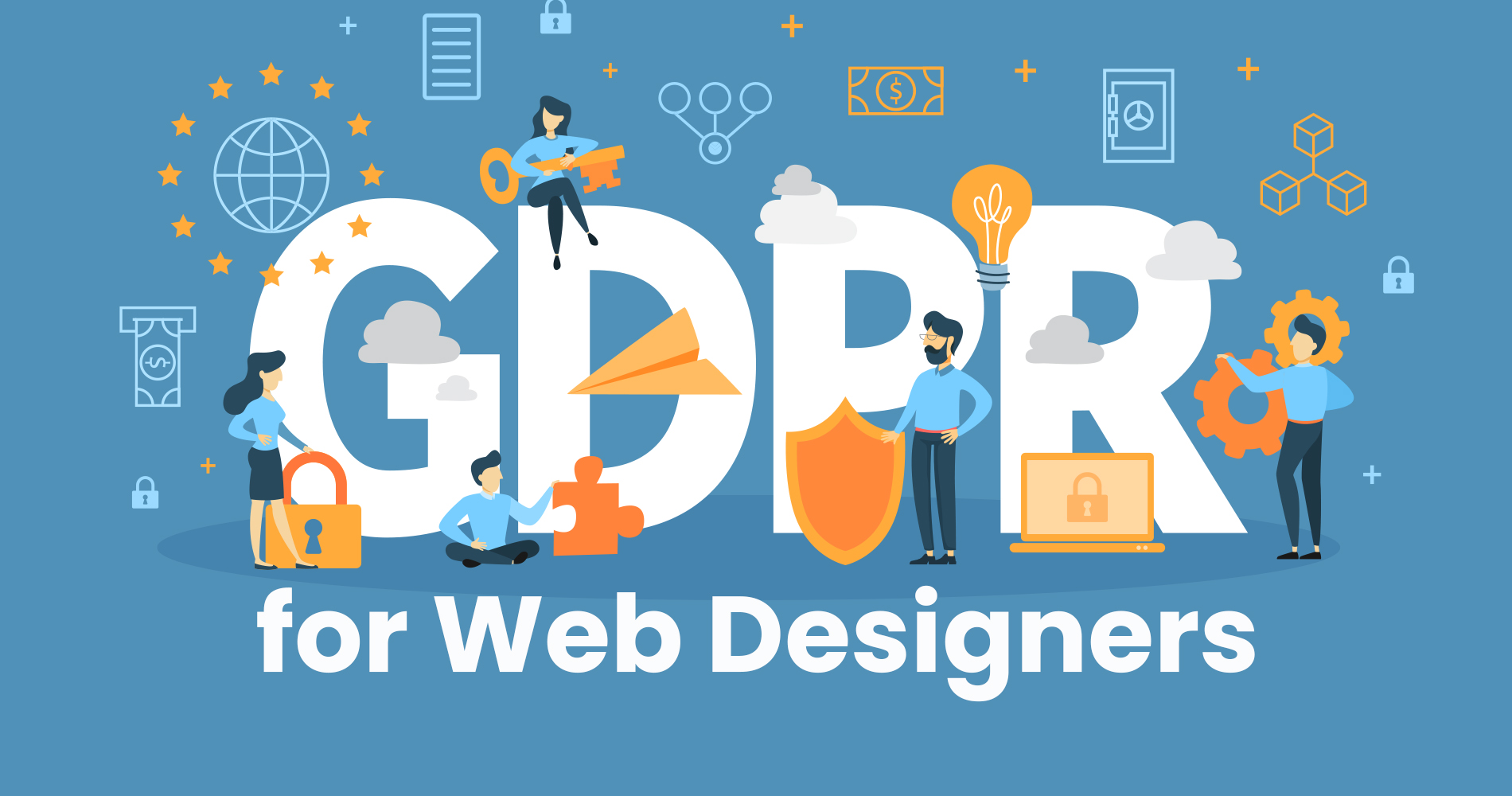Web designers focus on the user experience when designing websites and apps, however, their job is not to collect or handle any personally identifiable information about those users. The GDPR was created to protect privacy for European Union citizens. By collecting data through the website, an organisation would fall into this legislation’s scope. Under GDPR, companies must make sure they handle personal data safely and securely so that it doesn’t get hacked away. GDPR also requires companies to keep data only if they need to, which is vital because organisations can’t predict what users might do in the future or how their business might grow over time.
As with any piece of legislation, the GDPR is a long document, which makes it easy to get lost in the long list of terms, definitions, and annexes. However, the purpose of this article is to cut through this and provide you with a comprehensive overview of the GDPR to ensure you are fully informed on what it entails, how it will affect you, and what you need to do to ensure you meet its requirements.
The GDPR in Brief
The General Data Protection Regulation (GDPR) is a new regulation by the European Union regarding data management. It was made to protect the data rights and privacy of the European Union citizens. I’ll discuss the main parts of the GDPR below, but first, let’s cover some terminology.
The GDPR concentrates on 6 main topics to outline and protect data rights and privacy for citizens of the European Union. I’ll discuss this below. However, there are a few essential elements I think it pertinent to cover first to ensure you have a clear understanding of the terminology used in the GDPR.
The GDPR will apply to all companies processing the personal data of individuals in the EU, regardless of the company’s location or the location of the individuals whose personal data is being processed. The GDPR also applies to the processing of personal data of individuals who are in the EU by a company not founded in the EU, where the activities are related to providing goods to EU citizens (regardless of whether payment is required) and monitoring the behaviour of such EU citizens. If you want to avoid unnecessary legal trouble, then you should carefully consider how you are going to begin adhering to these new standards.
Notification rights
As a result of the new legal framework, both citizens and non-citizens of the European Union have the right to be informed in writing if their data has been exposed to a security threat. Also, web users have a right to view and learn how a company has used the private information it has collected. EU rules also allow users to delete their data. In other words, users can request the permanent deletion of all personal information from company systems.
Transparency of data
Businesses must now provide their customers with the option to download their data in a machine-readable format, such as CSV, as part of GDPR. A user may then choose to share the downloaded data with another company.
Even though they seem very similar, there is a huge difference between the right to access your data and the right to portability of your data. To be granted access to data, companies must be able to provide all the information they have stored about a specific user, and they must also specify how long the information will be stored on the company's servers and how the data was obtained. Users are only entitled to access data that they have submitted to the company under the right to access.
Privacy by Design
Privacy by design is a new concept introduced by GDPR. The web design and development process must include strict privacy measures for any digital product that collects or uses personal data.
GDPR brought each of these concepts to the foreground of the global web design industry, allowing each to now play a vital role in how web designers design and maintain websites.
The responsibility of data security falls to web designers
With the growing concern for website security and privacy, you’d be surprised to know many designers aren’t fully aware of how to design websites that are secure and protect user data. This means as a web designer, you have an ethical responsibility to understand what is being stored in your databases.
As the EU’s GDPR (General Data Protection Regulation) comes into effect, website designers are under pressure to take on a more active role in ensuring data security and privacy while designing their websites. Since they will now be held responsible for protecting user data via their web designs, designers will have to put in extra time when it comes time to thoroughly understand exactly what their database looks like as well as their client's specifications for the information being collected and stored on the website.
Privacy Plans Must be a Part of Website Design
The advent of GDPR, which entered the global web design conversion in 2016, has been anticipated by many web design companies. Business owners who have not yet adapted their standard web design processes to incorporate data privacy guidelines are struggling to meet the demands of new privacy laws.
A GDPR-compliant website and digital app designers and developers around the globe will no longer be able to blame ignorance or avoid responsibility for the data that they collect and share.
In the coming months and years, as more and more professional design agencies join the fray, there is a good chance that web design will become more expensive as companies become more aware of the extra work required to ensure data security.
The GDPR may offer a solution to a common design dilemma
The EU GDPR challenges user experience designers based on measurable metrics. Web designers are expected to create user interfaces that handle privacy more clearly than we are used to. It's not uncommon for many of the websites and applications used today to conceal their privacy settings so deep in their platform that nobody even knows they're there. We face another obstacle, however, after we find the privacy settings, in figuring out what the privacy policy is saying in plain language.
GDPR will require companies to make this information easy to understand for all users, as well as the design community to make privacy more accessible. It will likely end abruptly when consenting to our data being collected and used by an umbrella company disappears.
Many websites store user data in cookies for a customized experience. GDPR may lead more companies to store cookies service-by-service. Thus, only useful cookies will be stored and not certain, useless ones.
Lastly,
GDPR is one of the best things to happen to website designers, web users, and website owners alike. However, this law alone is not enough on its own to fully foster change in interior design culture. The way that web designers collect, secure, and maintain user data must be inclusive of a shift in interior design culture so that we may work collaboratively towards building more accessible, secure, and privacy-focused spaces online when it comes down to the way one collects and maintains internal or external client data. It’s just one of many ways in which web designers are uniquely positioned as champions at the forefront of pushing for progress through their website design process as well as the education they provide their clients; Therefore, we must help further push this important issue of security and user privacy online forward through a collaborative effort between those who create websites, those who manage them, alongside their current users.




